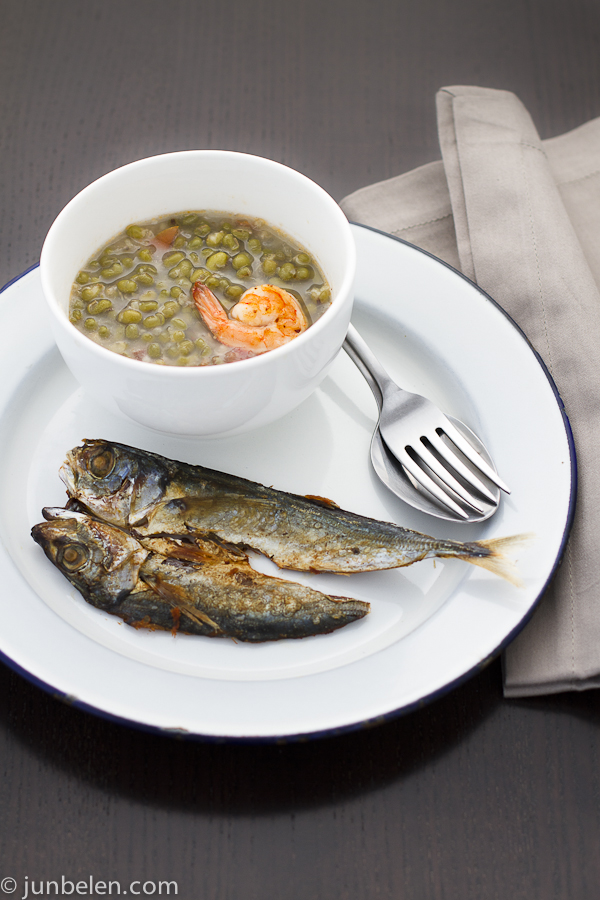The church’s hallowed square was filled to the brim with the faithful. I held my mom’s hand as steadfastly as I could like my life depended on it. I was afraid that if I let go I would get lost in the swelling sea of people. I stayed close and followed her every step with a watchful eye.
It was the Thursday before Easter during the holiest week of the year. There was a long queue to get a glimpse of the miraculous Black Nazarene, the much venerated life-size wooden sculpture of Christ in Quiapo Church in one of the busiest districts of Manila. The line stretched around the church’s perimeter but everyone waited for their turn without any complaint. Old folks with their jeweled rosaries. Women with their restless toddlers. Young couples with their peers. For some, the arduous wait is a form of penitence but for most it is a lifelong tradition.
As we entered the church festooned with sampaguita, the heady scent of the flowers and the glow of countless candles burning greeted us. Each slender taper was lit with a trustful intention in mind. A new job or a new love. A cure for a serious sickness. A solution to a painful problem. For the longest time, my mom’s prayer had been for a son. She was already blessed with a devoted husband and five lovely daughters but her ardent prayer was for a son — the one who would proudly carry the family name. And so when she had the good fortune of having me, she made a promise to visit the Black Nazarene every year and to give thanks for her answered prayers.
When our turn finally came, she reached inside her purse for my dad’s white handkerchief. She held the Black Nazarene’s majestic maroon robe, closed her eyes, and whispered a prayer. After a brief pause, she turned around, brushed my forehead with the blessed handkerchief, wrapped her arms around me, and hugged me tightly.
A simple, austere plate of mung bean stew and fried dried and salted fish reminds me about Lent in so many ways. Lent is a time of restraint. It is a time of retreat to examine what matters most in life. This humble vegetable stew has been my family’s source of sustenance during these solemn times.
Mung Bean Stew Recipe, makes six to eight servings
1 cup dried mung beans
5 cups shrimp stock or water
1 tablespoon vegetable oil
2 cloves garlic, crushed
1 small onion, chopped, about 1/2 cup
2 small tomatoes, chopped, about 1/2 cup
1/2 pound shrimp, shelled, deveined, and cleaned
1 tablespoons fish sauce, more to taste
1 bunch spinach, washed and stems removed
Rinse and sort the beans. Soak the beans overnight in cold water, enough to cover the beans with several inches of water. Discard the water after soaking. Soaking will speed up the cooking process but is not necessary.
Place beans and shrimp stock in a pot. Bring to a boil, reduce heat to a simmer, and cook until beans are tender, about 30 minutes to an hour. Cooking time depends on whether the beans were pre-soaked or not.
While the beans are cooking, sauté garlic, onions and tomatoes in oil over medium-high heat until fragrant and softened, about 5 to 8 minutes. Add the shrimp and sauté until cooked through, about 5 minutes. Add shrimp mixture and fish sauce to the beans, stir, and cook for ten more minutes, stirring frequently. Add more water if the stew becomes too thick. Adjust the taste by stirring in more fish sauce, if necessary.
Add spinach leaves right before serving. Ladle into bowls and serve with fried dried salted fish and freshly steamed rice.
Shrimp Stock Recipe
shrimp heads and shells
water
Place the shrimp heads and shells in a pot. Add water, enough to just cover the shrimp trimmings. Bring to a boil, reduce heat and let it simmer for 15 to 20 minutes. Skim and discard any foam that rises to the top of the liquid. Strain the shrimp trimmings from the stock.
The shrimp stock will keep in the refrigerator for up to 2 weeks, but it will store in the freezer for a few months. To use frozen stock, just slowly reheat in a saucepan.
Cooking Notes:
1. Fermented shrimp paste can be used in place of fish sauce to season the stew.
2. Tinapa [tee-nah-pah], smoked fish, or even pork can be used to add another layer of flavor and make the stew more substantial. For a strictly vegetarian version, replace the shrimp stock with a vegetable stock, season with salt, and take out the shrimps.
3. Some prefer the beans puréed into a thick paste but I prefer my stew a little thinner, which makes it more like a soup than a stew.
4. Dried salted fish like scad and mackerel are usually available in most Asian grocery stores. For those who have never cooked with dried fish before, they can be extremely pungent.

